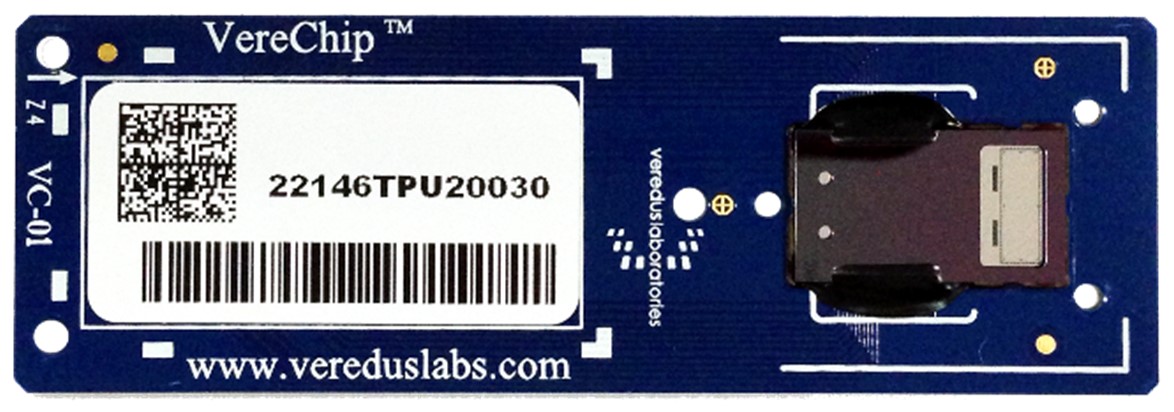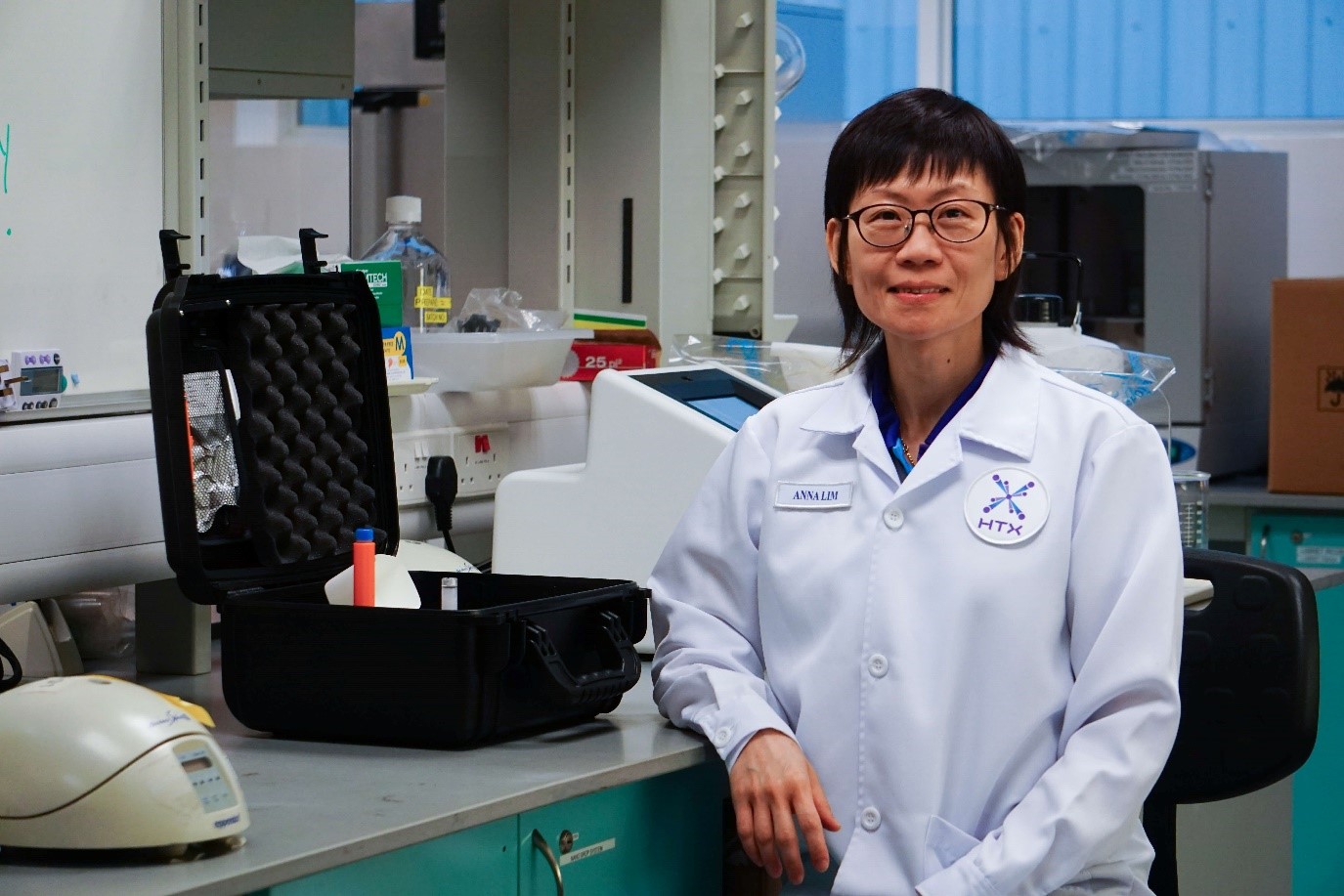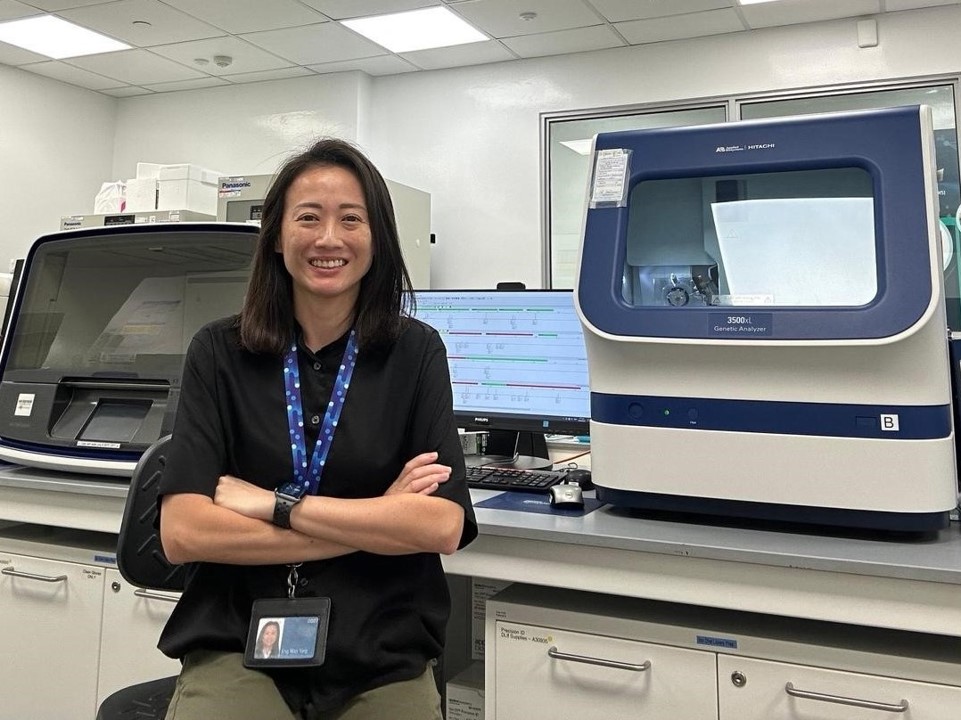 A view of the patented lab-on-chip that HTX developed with Veredus Laboratories. (Photo: HTX)
A view of the patented lab-on-chip that HTX developed with Veredus Laboratories. (Photo: HTX)
In an affirmation of HTX’s dedication to innovation, the agency was recently awarded its first patent.
The patented technology is centered on a DNA phenotyping lab-on-chip that uses a novel method to determine a person’s biogeographical ancestry – specifically East Asian, Caucasian, African, South Asian and Malay.
Lab-on-chip refers to a miniaturised device that boasts multiple laboratory functions within a single chip. The device that HTX developed combines microarray, polymerase chain reaction (PCR) and machine learning with custom primers and probes.
Anna Lim, a deputy director at HTX’s CBRNE (Chemical, Biological, Radiological, Nuclear, and Explosives) Centre of Expertise (CoE) and one of the co-inventors of the patent, shared that the journey toward obtaining a patent was filled with many invaluable learning points.
 Anna Lim, a deputy director at HTX’s CBRNE CoE, is one of the co-inventors of the patent. (Photo: HTX)
Anna Lim, a deputy director at HTX’s CBRNE CoE, is one of the co-inventors of the patent. (Photo: HTX)
For example, the learning journey highlighted the importance of being open to new possibilities, the significance of clear documentation on the experimental results and the patience required throughout the rigorous patenting process.
“One of the key learning points was the importance of persistence and critical thinking in navigating complex technical challenges, coupled with the value of interdisciplinary collaboration which brings together diverse perspectives, skillsets, and expertise,” she added.
HTX Senior Forensic Scientist Eng Wan Ying, who was also involved in the patent application process, also walked away from the experience with several learning points, among which was the need to anticipate common objections and prepare early, as well as streamline and structure procurement and contract processes to minimise delays.
Other lessons learned included ensuring good documentation and records of all the development stages of the project, engaging patent attorneys at an earlier stage to help frame the invention better and make it stronger for more defensible claims.
 HTX Senior Forensic Scientist Eng Wan Ying. (Photo: HTX)
HTX Senior Forensic Scientist Eng Wan Ying. (Photo: HTX)
“Future applications should focus on a clearly defined single inventive concepts. If multiple inventive components exist, we should assess the unity early and consider filing separate applications. This would minimise the chances of the examiner raising any objections due to the presence of multiple related components in one application,” she added.
HTX Forensics Centre of Expertise (CoE) Director Lim Chin Chin described this achievement as a “significant milestone” in HTX's journey towards advancing technological innovation in forensic science.
She also pointed out that the patent has the potential to be more than just legal safeguards for HTX’s innovations.
“Patents will be strategic assets that open doors to partnerships, strengthen HTX’s influence, and position the agency as a thought leader in public safety,” she said.
Chin Chin shared that the Forensics CoE will take steps to encourage its scientists and engineers to start thinking about patents and IP protection from the very start of their projects, and ensure that they are familiar with IP requirements. Efforts will also be made to establish a strategic decision-making framework that would guide the application of new patents for HTX.
“Every patent that HTX pursues is not just about IP – it is also about turning frontline innovation into a national advantage,” she added.

